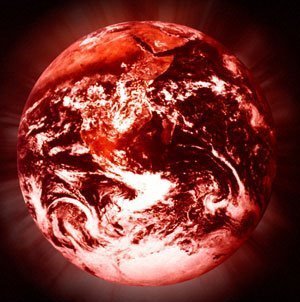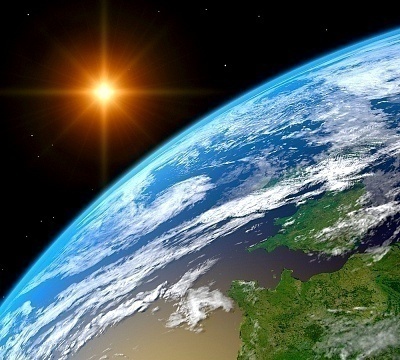How Was the Earth Formed
As science is beginning to move towards terraforming, a process that converts a “dead” planet into a thriving environment for life, the question of “How was the Earth formed?” comes to mind. Unfortunately, there is no exact answer when it comes to the formation of the Earth as no one was around back then to record it. Religion claims that God created the Earth in seven days several thousand years ago while science says that evolution, natural selection, and physics created the Earth billions of years ago. As religious claims are generally shrouded in controversy and are based more on opinions rather than facts, this article will explore the leading scientific understanding of the Earth’s formation.
Cosmic Creation
The leading scientific theory about the formation of the Earth begins with the formation of the Universe. Science speculates that the Universe started with a chaotic explosion known as the Big Bang. The Big Bang describes how a singularity, the smallest particle in existence, dramatically exploded, unleashing extremely dense materials that spread out at the speed of light and eventually made up the Universe. As the rapidly moving particles finally began to slow down they began to form super hot gases. Over millions of years, these gases slowed down enough to form actual objects including the Sun and eventually the planets that make up our Solar System.
The Dust Settles
While the Earth started off as a super hot ball of gas, it soon began to solidify and form an environment of its own. This early environment was composed of mostly methane and ammonia, making it unsuitable for life as we know it. Fortunately, chemical reactions took place within the methane and ammonia that converted these gases into nitrogen, hydrogen, and carbon dioxide. Because of the light weight of hydrogen, most of it drifted off into space. After some time, more chemical reactions took place that created hydrogen and oxygen. Again, the hydrogen drifted off into space. The oxygen generated by these reactions, however, moved to lower regions in the atmosphere to form the stratosphere. Once the stratosphere was in place, algae were able to begin their growth cycle on the ocean surface. These algae converted a large amount of carbon dioxide in the atmosphere to oxygen while at the same time, plants began to grow on land. It was this series of chemical reactions that were directly responsible for life on Earth.
Parts Of The Atmosphere
As the gases that were generated by these chemical reactions moved to different regions, they created various parts of the atmosphere that each have a specific function. The following is a list of the different parts of the atmosphere and the various functions that they perform.
Troposphere
The Troposphere is the region of the atmosphere in which humans and all other life on Earth exists. The Troposphere is made up of 21% oxygen, 78% nitrogen, and 1% trace gases. The Troposphere is 6-8 km in height at the Northern and Southern poles and 17 km at the equator. For every one km away from the surface, the Troposphere decreases in temperature by 6.5 degrees Celsius. At an altitude of 12 km, the Troposphere meets an area known as the Tropopause where the Stratosphere begins.
Stratosphere
The Stratosphere is directly above the Troposphere and the Tropopause and extends to an altitude of 50 km away from the surface. The Stratosphere is also known as the Ozone Layer and it is responsible for weather control. The lower Stratosphere is where the Earth’s jet streams are located and has an average temperature of -60 degrees Celsius as well as an average wind speed of 320 kph. The upper Stratosphere, however, has an average temperature of 18 degrees Celsius due to the heat that is generated from ozone absorbing sunlight.
Mesosphere
The Mesosphere begins at the end of the Stratosphere and extends to an altitude of 80 km above the surface. The average temperature of the Mesosphere is -100 degrees Celsius, making it the coldest region of the atmosphere. Ironically, this is often where objects from space burn up due to friction.
Thermosphere
The Thermosphere begins at the end of the Mesosphere and extends far out into space. The Thermosphere, being the last part of the atmosphere, is made up of two separate regions: The Ionosphere and the Exosphere. The Thermosphere as a whole can reach temperatures up to 2000 degrees Celsius because nitrogen and oxygen in the thermosphere absorb radiation from space and convert it into heat.
Ionosphere
The Ionosphere begins immediately following the Mesosphere and extends to an altitude of 550 km from the surface. The Ionosphere is made up of electrically charged particles from nitrogen, oxygen, and other gases. Radio broadcasters use the Ionosphere to bounce radio signals across extremely far distances but when solar flares occur, more particles become electrically charged and can interfere with radio signals.
Exosphere
The Exosphere begins where the Ionosphere ends and extends for thousands of kilometers into space. The Exosphere is considered “low Earth orbit” and is where satellites orbit the Earth.
How Old is The Earth
According to scientists, it is believed that the Earth is about 4.55 billion years old plus or minus 1%. This is about the same age as the solar system. Despite attempts by some to argue against this, numerous different methods have been employed to support the hypothesis that the Earth is this age. While the exact age is impossible to know, these experiments and tests have given the round about number of 4.55 billion years.
How to Test the Age of the Earth
The first step is to determine a base line. The oldest rock ever found was 3.9 billion years old. Within this rock there were minerals that were around 4.1 to 4.2 billion years old.Therefore, what this creates is an understanding that the Earth has to be around that old. However, finding a rock that old is very rare. Rocks have been found more commonly that are around 3.5 billion years old which gives a comfortable base line. The Earth has to be at least 3.5 billion years of age.
The way to get a more precise number is to do a Pb/Pb isochron age. This compares the measurements of three different types of lead: Pb-206, Pb-207 and either Pb-208 or Pb-204. A plot is then built that compares Pb-206 to Pb-208/204 and another that compares Pb-207 to Pb-208/204. The single assumption here is that the solar system formed from a single source of matter which would mean that all of this lead came from one source and are just different isotopes of it.
As time goes on, the amount of Pb-206 and Pb-207 will change because of decay. Since the Pb comes from Uranium, as more of the Uranium decays into Pb-206 or Pb-207 from U-238 and U-235 respectively, new points appear on the plot. The greater the uranium to lead ratio, the more separate the points will be on the comparisons. Since the source of the solar system would have all the same ratios of uranium isotopes, all of the points would fall on a single line. By calculating the slope, a scientist can then determine the age when the pool of matter split into different types.
A young-Earther–someone who argues that the Earth is young–would say that the above assumptions don’t work. However, because the data points work out, it proves the age of the Earth. Since the data points exist to begin with and there was a common origin of all the material, it is easy to determine that the age is 4.55 billion years give or take a single percentage.


Comments - No Responses to “How Was the Earth Formed”
Sorry but comments are closed at this time.